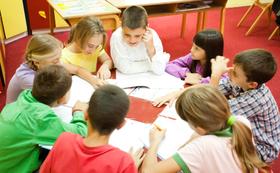Top Rankings
Amityville Union Free School District ranks among the top 20% of public school district in New York for:
Category
Attribute
Community Size
Largest student body (number of students) (Top 1%)
For the 2025-26 school year, there is 1 public middle school serving 600 students in Amityville Union Free School District. This district's average middle testing ranking is 1/10, which is in the bottom 50% of public middle schools in New York.
Public Middle School in Amityville Union Free School District have an average math proficiency score of 24% (versus the New York public middle school average of 51%), and reading proficiency score of 29% (versus the 51% statewide average).
Minority enrollment is 97% of the student body (majority Hispanic), which is more than the New York public middle school average of 63% (majority Hispanic).
Overview
This School District
This State (NY)
# Schools
5 Schools
1,657 Schools
# Students
2,832 Students
888,790 Students
# Teachers
296 Teachers
83,542 Teachers
Student-Teacher Ratio
10:1
10:1
Student By Grade
District Rank
Amityville Union Free School District, which is ranked #978 of all 1,008 school districts in New York (based off of combined math and reading proficiency testing data) for the 2022-2023 school year.
The school district's graduation rate of 80% has increased from 74% over five school years.
Overall District Rank
#984 out of 1017 school districts
(Bottom 50%)
(Bottom 50%)
Math Test Scores (% Proficient)
27%
52%
Reading/Language Arts Test Scores (% Proficient)
24%
49%
Science Test Scores (% Proficient)
58%
78%
Graduation Rate
80%
87%
Students by Ethnicity:
Diversity Score
0.55
0.73
% American Indian
1%
1%
% Asian
1%
9%
% Hispanic
60%
30%
% Black
30%
20%
% White
4%
37%
% Hawaiian
n/a
n/a
% Two or more races
4%
3%
All Ethnic Groups
District Revenue and Spending
The revenue/student of $34,088 is higher than the state median of $31,324. The school district revenue/student has grown by 5% over four school years.
The school district's spending/student of $38,624 is higher than the state median of $32,199. The school district spending/student has grown by 5% over four school years.
Total Revenue
$97 MM
$78,541 MM
Spending
$109 MM
$80,737 MM
Revenue / Student
$34,088
$31,324
Spending / Student
$38,624
$32,199
Best Amityville Union Free School District Public Middle Schools (2025-26)
School
(Math and Reading Proficiency)
(Math and Reading Proficiency)
Location
Quick Facts
Rank: #11.
Edmund W Miles Middle School
(Math: 24% | Reading: 29%)
Rank:
Rank:
2/
Bottom 50%10
501 Rt 110
Amityville, NY 11701
(631) 565-6200
Amityville, NY 11701
(631) 565-6200
Gr: 6-8 | 600 students Student-teacher ratio: 9:1 Minority enrollment: 97%
Recent Articles

Public School Open House & Enrollment Season Guide
A parent-focused guide to the public school open house and enrollment season, with expert questions, timelines, and decision tips.

School Supply Budget 2026: Fees, Books, Tech Costs
School Supply Budget 2026 guide for parents, covering fees, textbooks, technology, and hidden extras to plan ahead.

Education Funding in America (2025 Update)
Comprehensive 2025 update on public school funding in America, new federal and state policies, per-pupil spending, and equity challenges.





